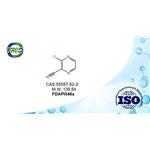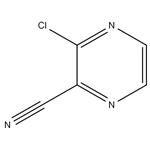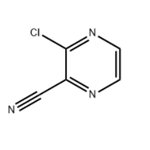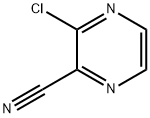Unveiling the Potential of 3-Chloropyrazine-2-carbonitrile in Modern Chemistry
Apr 22,2024
Introduction
3-Chloropyrazine-2-carbonitrile has emerged as a beacon in the realm of chemical research, distinguished not only by its unique properties but also by its expansive range of potential applications that span across multiple scientific disciplines. This compound, with its intricate and versatile molecular structure, is endowed with numerous reactive sites, making it an indispensable cornerstone in the synthesis of a diverse spectrum of chemical products. The advent of 3-chloropyrazine-2-carbonitrile has significantly widened the scope of research and development opportunities within various branches of chemistry, thereby reinforcing its crucial contribution to both theoretical exploration and practical application in the chemical sciences. It serves as a linchpin in facilitating pioneering advancements in critical areas such as drug discovery, the development of agricultural chemicals, and innovation within material sciences. Consequently, this compound is recognized as a valuable tool in the chemist's arsenal, aiding in the exploration of new scientific frontiers and the solving of complex problems. The unique characteristics of 3-Chloropyrazine-2-carbonitrile have not only catalyzed progress in existing fields of study but have also inspired the inception of novel research directions, thus highlighting its indispensable role in advancing our understanding and utilization of chemical phenomena.

Figure 1 Characteristics of 3-Chloropyrazine-2-carbonitrile
Mechanism of Action
The essence of 3-Chloropyrazine-2-carbonitrile's mechanism of action is deeply rooted in its chemical structure, which lays the groundwork for a plethora of essential reactions in synthetic chemistry. Featuring a chloropyrazine ring coupled with a nitrile group, this compound embodies a rich electron configuration. This characteristic engenders a high reactivity with the chlorine atom on the pyrazine ring, making it a prime site for nucleophilic substitution reactions. These reactions facilitate the integration of various functional groups, further broadening the compound's utility. Concurrently, the nitrile group is amenable to transformations through hydrolysis or reduction, solidifying 3-Chloropyrazine-2-carbonitrile's status as a versatile precursor for synthesizing a diverse range of heterocyclic compounds, amino acids, and pivotal organic molecules. Such reactivity is instrumental in concocting complex molecules, particularly spotlighting its indispensability in medicinal chemistry and drug design for its specificity and efficiency.
Applications
The versatility and utility of 3-chloropyrazine-2-carbonitrile span a wide spectrum of chemical sciences, evidencing its broad applications. In pharmaceutical research, it stands out as a crucial intermediate for crafting various pharmacologically active molecules, showcasing properties that range from antiviral to antibacterial and anti-inflammatory. The ability of 3-Chloropyrazine-2-carbonitrile to engage with biological systems in specific, targeted manners renders it invaluable in the drug discovery and development process, heralding new eras of therapeutic intervention.
In agricultural chemistry, the compound plays a significant role in formulating pesticides and herbicides that promise enhanced efficacy with a minimal environmental footprint, demonstrating its capability to specifically target pests and weeds while preserving crops and non-target species. This aspect underscores its contribution to sustainable agricultural practices.
Moreover, in the realm of material science, 3-Chloropyrazine-2-carbonitrile's applications are transformative, facilitating the development of advanced materials such as organic semiconductors and LEDs. The compound's inherent chemical properties are harnessed to engineer materials endowed with desired electronic and photonic features, thus fueling innovation in electronics and promoting energy efficiency through advanced lighting solutions.
Storage Methods
Ensuring the correct storage of 3-Chloropyrazine-2-carbonitrile is imperative for maintaining its chemical integrity and safety. Optimal preservation necessitates a cool, dry environment shielded from direct sunlight and moisture, safeguarding against degradation and ensuring stability. Storage conditions should ideally include a securely sealed container within a well-ventilated, temperature-regulated setting. Vigilance is required to avert exposure to bases or active metals, which could trigger undesirable reactions.
Moreover, meticulous labeling and comprehensive documentation are critical to inform handlers of the compound's characteristics and associated precautionary measures. Accessibility to Safety Data Sheets (SDS), detailing handling protocols, potential hazards, and requisite first-aid measures in case of inadvertent exposure, is crucial. Adherence to these storage protocols enables researchers and professionals to employ 3-Chloropyrazine-2-carbonitrile safely in their endeavors, mitigating risks and perpetuating the tradition of high-caliber chemical research and development.
References
[1]Yang G, Fang S, Zhang J, et al. Solubility measurement and correlation of 2-Amino-3-chloropyrazine and 2-Amino-3, 5-dibromopyrazine in a series of mixed solvent systems at T=(278.15 to 323.15) K[J]. Journal of Chemical & Engineering Data, 2022, 67(10): 3186-3200.
[2]Jandourek O, Tauchman M, Paterova P, et al. Synthesis of novel pyrazinamide derivatives based on 3-chloropyrazine-2-carboxamide and their antimicrobial evaluation[J]. Molecules, 2017, 22(2): 223.
- Related articles
- Related Qustion
- Synthesis and Research Applications of 3-Chloropyrazine-2-carbonitrile in Drug Discovery Feb 22, 2023
3-Chloropyrazine-2-carbonitrile is a heterocyclic compound that is used in some organic synthesisand and has been studied for its potential applications in scientific research.
7-Bromo-4-chloro-3-nitroquinoline, pivotal in pharmaceutical synthesis, yields derivatives with TNF-α inhibitory effects, holding promise for treating cancer, pain, and viral infections.....
Apr 22,2024API2,7-Dihydroxy-9-fluorenone's journey from an obscure molecular entity to a compound of interest illustrates the evolving landscape of chemical research.....
Apr 22,2024API3-Chloropyrazine-2-carbonitrile
55557-52-3You may like
3-Chloropyrazine-2-carbonitrile manufacturers
- 3-Chloropyrazine-2-carbonitrile
-

- $0.00/ kg
- 2024-05-09
- CAS:55557-52-3
- Min. Order: 1kg
- Purity: 98%
- Supply Ability: 1 ton
- 3-Chloropyrazine-2-carbonitrile
-

- $5.00 / 1KG
- 2024-04-09
- CAS:55557-52-3
- Min. Order: 1KG
- Purity: 98%
- Supply Ability: g-kg-tons, free sample is available
- 3-Chloropyrazine-2-carbonitrile
-

- $0.00 / 1KG
- 2022-09-30
- CAS:55557-52-3
- Min. Order: 1KG
- Purity: 98%
- Supply Ability: 1ton




